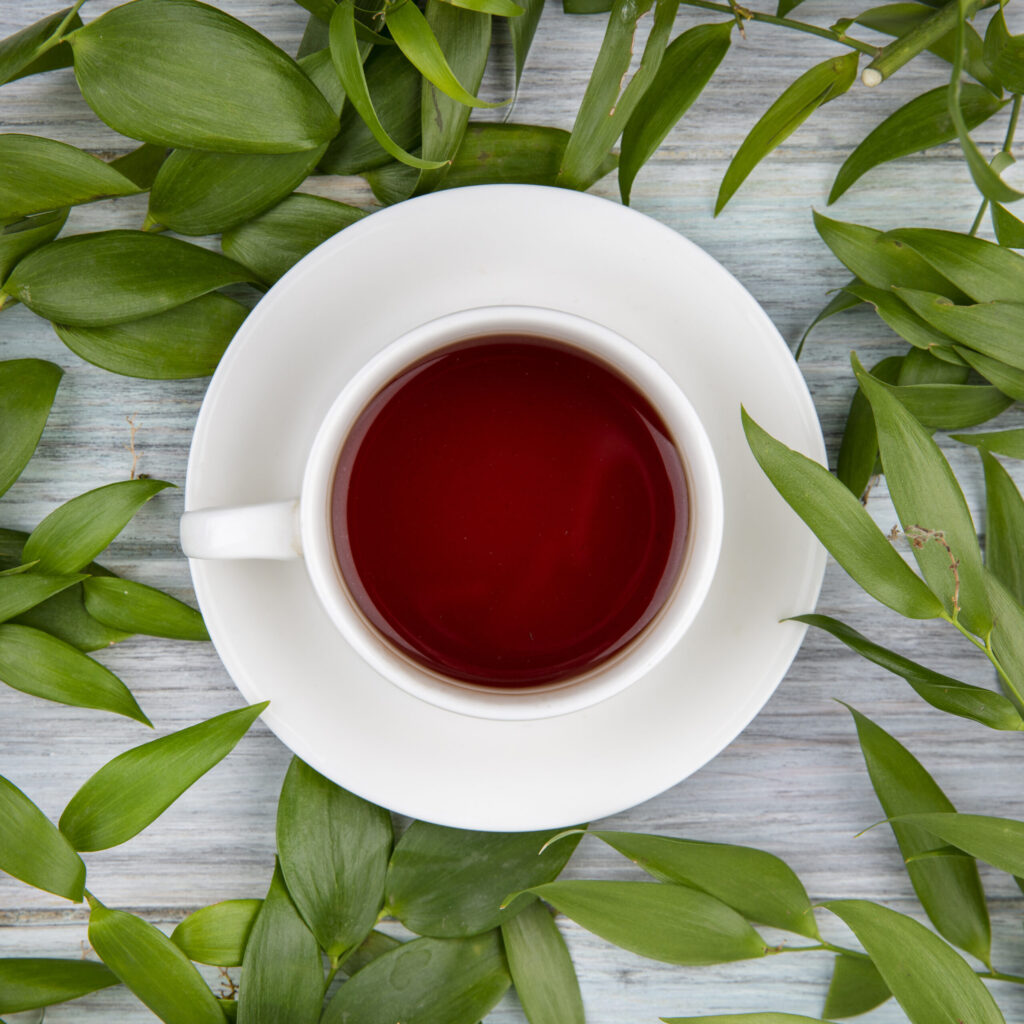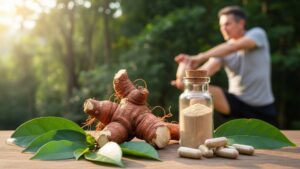Introduction
Tea is one of the most consumed beverages in the world, celebrated for its health benefits and rich heritage. But as demand for herbal teas, green teas, and botanical infusions grows, so do concerns about contamination—particularly from heavy metals such as lead, arsenic, cadmium, and mercury. These contaminants can make their way into tea through soil, water, or processing equipment, posing a risk to consumer health and brand reputation.
For tea producers, wellness brands, and private-label formulators, ensuring heavy metal safety is no longer optional—it’s a regulatory and ethical imperative. This guide walks you through everything you need to know about heavy metal testing in tea, from contamination sources and regulatory limits to testing methods and how to choose the right lab.
Why Are Heavy Metals Found in Tea?
Heavy metals are naturally occurring elements that can be toxic in even small amounts. Teas are particularly vulnerable to contamination because of the way plants absorb metals from their environment:
- Soil contamination: Tea is typically grown in areas where the soil may naturally contain elevated levels of heavy metals, or where previous industrial activity has left residues.
- Water and irrigation: Use of contaminated irrigation water can lead to uptake of metals like lead and cadmium.
- Airborne particles: Some growing regions may be exposed to industrial or vehicular pollution that settles on crops.
- Processing equipment: Older or improperly maintained equipment can leach metals into the dried product.
Since tea is consumed as an infusion, and often repeatedly by the same individuals, even trace amounts can accumulate in the body over time—posing a chronic health risk.
Which Heavy Metals Are of Concern in Tea?
The most commonly tested heavy metals in teas include:
- Lead (Pb): A neurotoxin linked to developmental and neurological damage, especially in children.
- Cadmium (Cd): Can accumulate in the kidneys and cause organ damage over long-term exposure.
- Arsenic (As): Associated with cancer and cardiovascular problems; often found in regions with natural arsenic in groundwater.
- Mercury (Hg): Toxic to the brain and nervous system, especially in methylated form.
Some testing programs also screen for:
- Nickel (Ni)
- Chromium (Cr)
- Aluminum (Al) (though less toxic, still a concern in high doses)
Regulations and Limits for Heavy Metals in Tea
There is no single global standard for heavy metals in tea, but several jurisdictions have established maximum allowable limits:
United States
- The FDA does not set specific limits for tea, but uses broader food safety standards.
- Prop 65 (California): Requires warnings if heavy metal content exceeds defined daily intake thresholds.
European Union
- The EU sets maximum levels for cadmium and lead in tea under EC Regulation 1881/2006.
- Lead: 0.5 mg/kg (dried tea)
- Cadmium: 0.1 mg/kg (dried tea)
Codex Alimentarius
- Provides guidance for acceptable levels, often used as a benchmark in international trade.
Complying with these standards is critical to avoid product recalls, customs rejections, and legal action. Testing proactively helps brands avoid these issues before they hit the market.
Who Should Test Tea Products for Heavy Metals?
Testing should be conducted by:
- Tea importers and exporters
- Private label herbal brands
- Health and wellness brands using tea in blends or beverages
- Bulk botanical suppliers and distributors
- Third-party formulators
Even brands that source from “clean” regions should test regularly. Soil and water conditions can change, and suppliers may switch sources without disclosing.
When Should You Test for Heavy Metals in Tea?
Regular testing is a best practice. Here’s when to test:
- Before import or export: Avoid customs delays and border rejections.
- At the raw material stage: Test dried tea leaves or powders before blending.
- For every batch or lot: Especially important for organic and premium blends.
- After product formulation: For tea bags, capsules, or functional beverages.
If you’re pursuing certifications (USDA Organic, Non-GMO, NSF, etc.), these agencies may require or recommend heavy metals testing as part of quality assurance.
Testing Methods Used for Heavy Metals in Tea
The most commonly used methods include:
1. ICP-MS (Inductively Coupled Plasma Mass Spectrometry)
- Highly sensitive
- Can detect heavy metals at parts-per-billion levels
- Suitable for routine and regulatory testing
2. AAS (Atomic Absorption Spectroscopy)
- Cost-effective for single-element detection
- Slightly less sensitive than ICP-MS
3. ICP-OES (Optical Emission Spectroscopy)
- Suitable for multi-metal screening
- Good for mid-range concentrations
Each method requires sample digestion—typically using nitric acid—followed by instrument analysis.
How to Prepare Tea Samples for Testing
Proper sample collection is critical for accurate results. Here’s how to do it:
- Use a clean, food-grade container
- Label the sample with lot number, product name, and date
- Send at least 50–100 grams of representative material
- Avoid cross-contamination during scooping or bagging
Samples can include:
- Dried tea leaves
- Milled or powdered teas
- Instant tea blends
- Ready-to-drink tea bases
Understanding Your Lab Report: What Results Mean
When your results come back, you’ll receive a Certificate of Analysis (COA). This will include:
- Detected metals and their concentrations (usually in mg/kg or ppm)
- Method used (e.g., ICP-MS)
- Detection limits
- Pass/fail interpretation (based on your chosen spec or regulation)
Review your COA in collaboration with your QA or regulatory team. If your lab offers support, ask them to walk you through borderline or out-of-spec results.
What to Do If Your Tea Fails a Heavy Metal Test
A failed test doesn’t always mean a total loss, but you’ll need to act quickly:
- Quarantine the batch to avoid accidental distribution
- Notify suppliers to investigate potential sources of contamination
- Retest with a second lab if results are close to the limit
- Consider blending high-metal lots with cleaner ones to reduce levels (where legally allowed)
- Document everything for audit and traceability
The faster you respond, the less impact on your production schedule and brand reputation.
Choosing the Right Lab for Tea Testing
When selecting a lab for tea testing, prioritize those with:
- ISO/IEC 17025 accreditation
- Experience with botanical matrices like green tea, rooibos, chamomile, etc.
- Validated methods for heavy metals in dry foods and herbs
- Quick turnaround times (standard: 5–10 business days)
- Transparent COA reporting
Qalitex Laboratories, for example, specializes in heavy metal testing for dry teas and botanicals. With over 5,000 validated test methods and ISO 17025 accreditation, we help tea brands comply with Prop 65, EU regulations, and other global standards.
How Much Does Heavy Metal Testing in Tea Cost?
Costs vary based on the method and number of metals tested:
| Type | Method | Price Range |
|---|---|---|
| Single metal (e.g., lead) | AAS | $75–$120 |
| Multi-metal panel (Pb, Cd, As, Hg) | ICP-MS | $200–$350 |
| Full contaminant panel (incl. pesticides, microbes) | ICP-MS + other | $500–$900 |
Request a custom quote from your lab, especially if you plan to test multiple lots or need routine screening.
Frequently Asked Questions (FAQs)
Q: Is organic tea free from heavy metals?
A: Not necessarily. Organic certification does not guarantee absence of heavy metals. Testing is still recommended.
Q: Can I test the brewed tea instead of dried leaves?
A: You can, but it’s less reliable. Most regulatory standards apply to the dried material, which is more concentrated and consistent.
Q: What are the Prop 65 limits for tea?
A: Prop 65 sets limits on daily exposure levels, not concentration. Labs like Qalitex can calculate whether your tea requires a Prop 65 warning based on serving size.
Q: How often should I test my tea products?
A: At minimum, test every new batch of raw material and final product. More frequent testing may be needed for high-risk regions or suppliers.
Q: Can heavy metal levels be reduced after harvest?
A: Some post-harvest treatments may reduce surface contamination, but heavy metals absorbed in the plant tissue cannot be removed. Prevention is key.
Conclusion: Protect Your Brand and Your Customers
Heavy metal contamination is one of the most overlooked risks in the tea industry—but also one of the most preventable. Testing your teas regularly not only ensures compliance with FDA, EU, and Prop 65 standards—it protects your consumers, builds trust, and strengthens your brand’s reputation.
Whether you’re launching a new matcha blend or sourcing bulk rooibos for a wellness line, make heavy metal testing a standard part of your quality control process.
Partner with Qalitex Laboratories for expert, ISO-accredited heavy metal testing tailored to tea and botanical products. Contact us today to get started.
This guide is published by Qalitex Laboratories — specialists in chemical and microbiological testing for dietary supplements, teas, botanicals, cosmetics, and personal care products.





